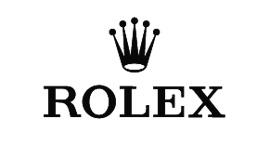On Friday 25 August, Watches of Switzerland saw its share price plunge by more than 20 per cent without explanation: after all, the UK-based retailer was forecasting full-year sales to increase 25 per cent and operating profit by almost 30 per cent. No explanation then, other than the previous day’s announcement that Rolex had acquired luxury watch seller Bucherer. Rolex is a major brand for Watches of Switzerland, which owns 202 stores in the United Kingdom and United States, while Bucherer operates 100 doors worldwide and has a strong presence Stateside. The drop in the Watches of Switzerland share price expressed the financial market’s fears that these two titans might clash on American soil, where Rolex authorised dealers are also expressing their concern.
Despite a reassuring statement that “the Rolex group is convinced that this acquisition is the best solution not only for its own brands but also for all the watch and jewellery partner brands, as well as for all the employees of the Bucherer group”, emotions ran high among industry players who are fully aware of the implications that Rolex’s strategy will have for the profession at large. Up until now, it has always been a question of “each to their own”, with Rolex focused on making watches and leaving consumer sales to its retail partners. The only Rolex owned-and-operated store is the brand’s Geneva boutique. All this will change in the wake of the takeover.
New beginnings?
Rolex’s acquisition of Bucherer is also a matter of market stability. The group, established in Lucerne in 1888, is a long-standing partner to Rolex. In 1924 Ernst Bucherer, representing the second generation, struck a deal with Rolex founder Hans Wilsdorf to sell its watches, thus helping to promote the still young brand. The two have maintained close ties ever since. When Rolex launched its Certified Pre-Owned programme, it did so with Bucherer. With no direct descendants to take over the business, Rolex was the ideal candidate. By stepping up, it prevented Bucherer from falling into the “wrong” hands and consolidated its sales network.
Whether or not the acquisition is purely a defensive move remains to be seen. Rolex is unlikely to take steps into e-commerce, instead continuing to build on brick-and-mortar sales. In this respect, that Rolex should enter the retail market was more or less a foregone conclusion and Bucherer an opportunity it couldn’t ignore. “There is no reason why Rolex shouldn’t give priority to its own brands,” comments Olivier R. Müller, founder of LuxeConsult. “That it now has that possibility, through one of the world’s largest networks, will definitely impact dealers everywhere.” What about margins, a point Müller also raises? Morgan Stanley estimates Rolex’s 2022 ex-works sales at CHF 9.3 billion which translates to CHF 13.95 billion at retail. This gives margin in the region of CHF 4.65 billion that Rolex can partially capture. How might the landscape evolve inside stores? Rolex is currently distributed by around half of the 100 Bucherer locations it now owns (the same for sister brand Tudor) and this will almost certainly change. And what of the “customer experience” factor that is transforming boutiques into cocktail bars, restaurants, movie theatres and lifestyle spaces? In its new role as a retailer, Rolex is shuffling the deck. Who holds the best hand? Wait and see.





